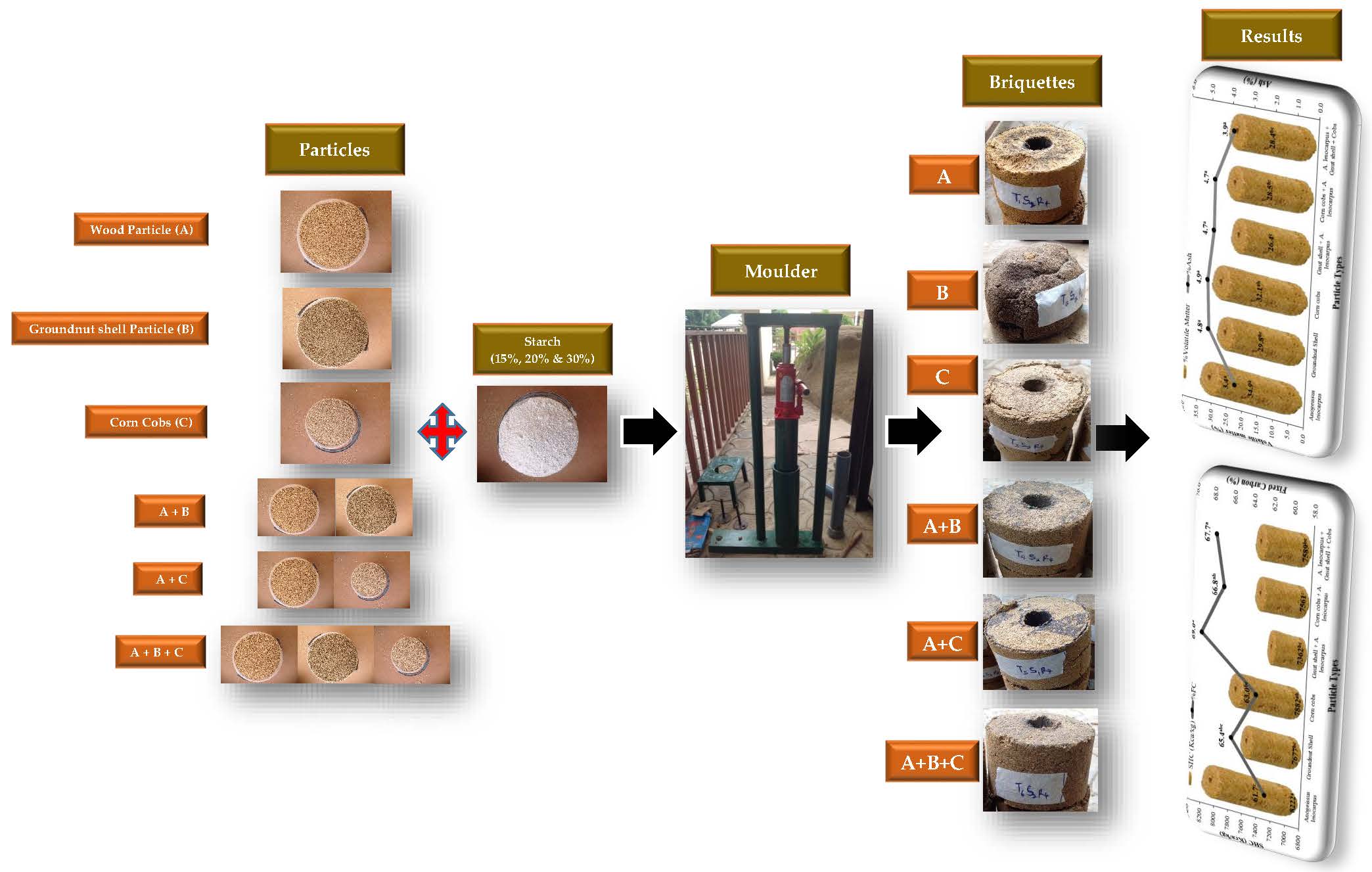This study investigated the physical and combustion properties of briquettes produced from agricultural wastes (groundnut shells and corn cobs), wood residues (Anogeissus leiocarpus) and admixtures of the particles at 15%, 20% and 25% starch levels (binder). A 6 x 3 factorial experiments in a Completely Randomized Design (CRD) was adopted for the study. The briquettes produced were analyzed for density, volatile matter, ash content, fixed carbon and specific heat of combustion. The result revealed that the density ranged from 0.44g/cm3 to 0.53g/cm3, while briquettes produced from groundnut shells had the highest (0.53g/cm3) significant mean density. Mean volatile matter and ash content of the briquettes ranged from 24.35% to 34.95% and 3.37% to 4.91%. A. leiocarpus and corn cobs particles had the lowest and highest ash content respectively. The briquette fixed carbon and specific heat of combustion ranged from 61.68% to 68.97% and 7362kca/kg to 8222kca/kg respectively. Briquette produced from A. leiocarpus particles had the highest specific heat of combustion. In general, briquettes produced from A. leiocarpus particles and admixture of groundnut shell and A. leiocarpus particles at 25% starch level had better quality in terms of density and combustion properties and thus suitable as environmentally friendly alternative energy source.

